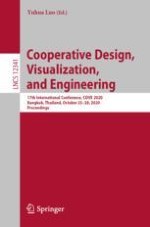This book constitutes the proceedings of the 17th International Conference on Cooperative Design, Visualization, and Engineering, CDVE 2020, held in Bangkok, Thailand, in October 2020.*
The 33 full papers and 7 short papers presented were carefully reviewed and selected from 74 submissions. The achievement, progress and future challenges are reported in areas such as health care, industrial design, banking IT systems, cultural activities support, operational maritime cybersecurity assurance, emotion communication, and social network data analytics.
* The conference was held virtually due to the COVID-19 pandemic.
